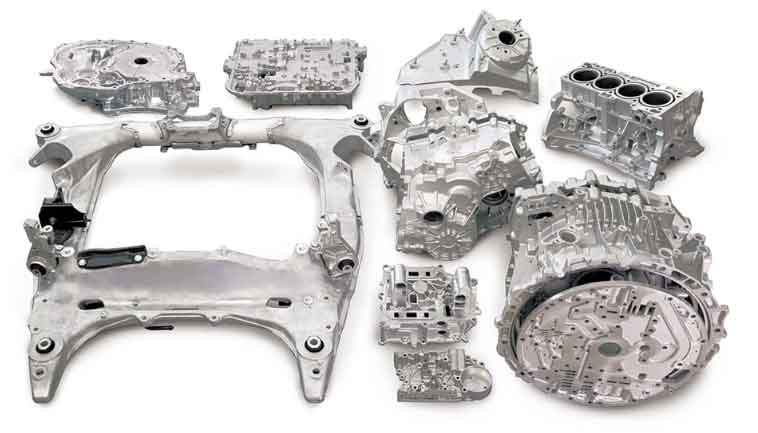
Die casting plays a crucial role in meeting the demands of the tech industry, particularly in the production of electronic components. The unique characteristics and advantages of die casting make it an ideal manufacturing method for electronic components. Here are some key factors highlighting the importance of die casting in the tech industry:
- Complex and Intricate Designs: Die casting allows for the production of complex and intricate designs with high precision. This is especially important in the tech industry, where electronic components often require intricate features and tight tolerances. Die casting enables the creation of intricate shapes, thin walls, and fine details, making it suitable for producing components such as heat sinks, connectors, housing, and brackets.
- High Production Efficiency: Die casting offers high production efficiency, making it suitable for the high-volume production requirements of the tech industry. The rapid filling and solidification of molten metal in the die casting process enable faster cycle times, allowing manufacturers to meet the demands of the fast-paced tech market.
- Material Variety: Die casting supports a wide range of materials, including aluminum, magnesium, zinc, and their alloys, which are commonly used in the tech industry. These materials offer desirable properties such as high thermal conductivity, lightweight, electrical conductivity, and corrosion resistance, making them ideal for electronic components.
- Precision and Consistency: Die casting ensures excellent dimensional accuracy, tight tolerances, and consistent quality across a large volume of components. This precision is crucial for electronic components to fit properly, maintain reliable electrical connections, and meet the stringent quality requirements of the tech industry.
- Cost-Effectiveness: Die casting is a cost-effective manufacturing method for electronic components. The ability to produce complex shapes and intricate designs in a single operation reduces the need for additional machining or assembly, resulting in cost savings. Additionally, the high production efficiency of die casting helps keep per-unit costs low, making it economically viable for the tech industry.
- Heat Dissipation: The thermal management requirements in the tech industry are critical, especially for electronic components that generate heat. Die casting offers excellent heat dissipation capabilities due to the high thermal conductivity of materials like aluminum and magnesium. Components such as heat sinks and enclosures can be efficiently produced using die casting to effectively dissipate heat and ensure optimal performance.
- Design Flexibility and Customization: Die casting allows for design flexibility and customization to meet specific requirements of electronic components. With die casting, manufacturers can incorporate features like inserts, threads, logos, and branding elements directly into the component, eliminating the need for additional operations.
- Durability and Protection: Die-cast electronic components offer excellent durability and protection against environmental factors, such as moisture, dust, and vibrations. The high structural integrity and corrosion resistance of die-cast materials ensure long-lasting performance and reliability of electronic devices.
Die casting enables the tech industry to meet the demands of innovative and high-performance electronic components. Its ability to produce complex designs, maintain high precision, offer material variety, and achieve cost-effective production makes it a preferred choice for electronic component manufacturers. As the tech industry continues to evolve, die casting will play a vital role in providing the necessary solutions for electronic devices and systems.
